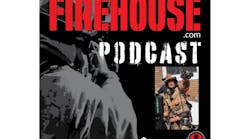I was recently discussing the topic of conflict resolution with my friend Battalion Chief Sam Haubert of Palm Beach County Fire Rescue. During the discussion, the chief said something that anyone in a leadership position can (or should) agree with: “By the time the issue comes to the attention of a chief officer, the damage has already been done.” I believe most would agree that this statement rings true in every firehouse in the country.
I once sat in a labor-relations meeting where one of our firefighters made an equally profound statement: “If we do not want the chief involved in every decision, maybe we shouldn’t bring every decision to the chief.” Bingo! Now I am not advocating that anyone withhold pertinent information from a chief officer (or any officer for that matter); rather, what I am saying is, we (as a service) need to learn to recognize and address issues at the lowest levels first. Imagine the bomb squad disarming the bomb after it detonated; doesn’t make sense, does it?
Before I continue, it is time for some disclosure. There have been times when I have been outstanding at addressing conflict, and there have been numerous times that my involvement has only made things worse or, worse yet, I have been the direct cause of the conflict itself. However, I do not think I am alone in this regard. Think about it, by nature, we love conflict. We are opinionated. We can be quite stubborn. We love messing with the newbie to “initiate” them into our world. We intentionally badger one another in the vain of bonding (and to deal with stress). I do not think anyone would take issue with these practices as long as they do not violate rights, policy or law.
Types of conflict
Thomas Jefferson once said that conflict engages us; in this context, we love conflict. Conflict by its very name has a negative connotation; however, not all conflict is bad. Think of all the discussions, meetings, training sessions (especially on tactics) that you have been involved in. I am sure there has been some conflict present, but the end is often good.
If you search the topic of conflict or conflict resolution online, there is no shortage of results. So this begs the question: What is conflict and how do we resolve it?
Here is my loose definition of positive conflict: If it doesn’t result in aggressive behavior (verbal or physical), violation of policy, laws or a lawsuit, you are good. Negative conflict is the opposite—plain, simple and easy to remember, right? Negative conflict tears us apart and separates us. A surprising number of us have all been there and done that, even if we did not get called out for being part of it. Some may have even paid the price for it, too.
At this point, some of you may be asking how can conflict be positive. This is a good question and easily answered. Positive conflict is a mechanism for new ideas, personal and professional growth, positive change, evolution in terms of increasing efficiencies and safety. Don’t believe me? That’s OK, but first think about EMS, PPE, NFPA standards, and how technology is currently being used in the fire service. I don’t think there is much debate that all of these were heavily debated, led to major conflicts among groups within the fire service, and have all changed the way we do business.
Referring back to Jefferson, if we are honest with one another, on some level we want conflict, we need conflict, and we would be lost without conflict. Conflict is a requirement of this profession. Where would we be if organizations such as the IAFF, IAFC, NFFF or NFPA (too name a few) did not stand behind the issues that have propelled the industry forward?
However, our beloved fire service has been rocked to its core by conflict. We have all heard of firefighters being arrested for violating civil rights and policies. Disputes that may have easily been resolved through mediation end up becoming front-page headlines. Some firefighters are being subject to disciplinary action for some innocent act going just a little too far. How do we keep letting this happen? The answer is simple. We do not truly understand conflict and how to deal with it when we are the ones involved in it. We need conflict awareness training and we need it now!
Next time
I think we can easily see the value in positive conflict and the destructive nature of negative conflict. In the second part of this article, we will tackle how to recognize conflict, how to manage conflict and how to prevent conflict.
Stay low, stay safe and train everyday!
Author’s note: This installment of Leadership Lessons is dedicated to John, Jennifer and John Kemp Jr. John Jr. is currently battling a rare neurological disease and is seeking treatment at John Hopkins Hospital In Baltimore. May we all find and have the strength and courage that the Kemps display on a daily basis. Their will to not give up no matter the challenge is nothing short of inspirational. I am honored to have them as friends for as many years as I have.







